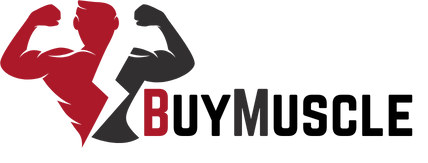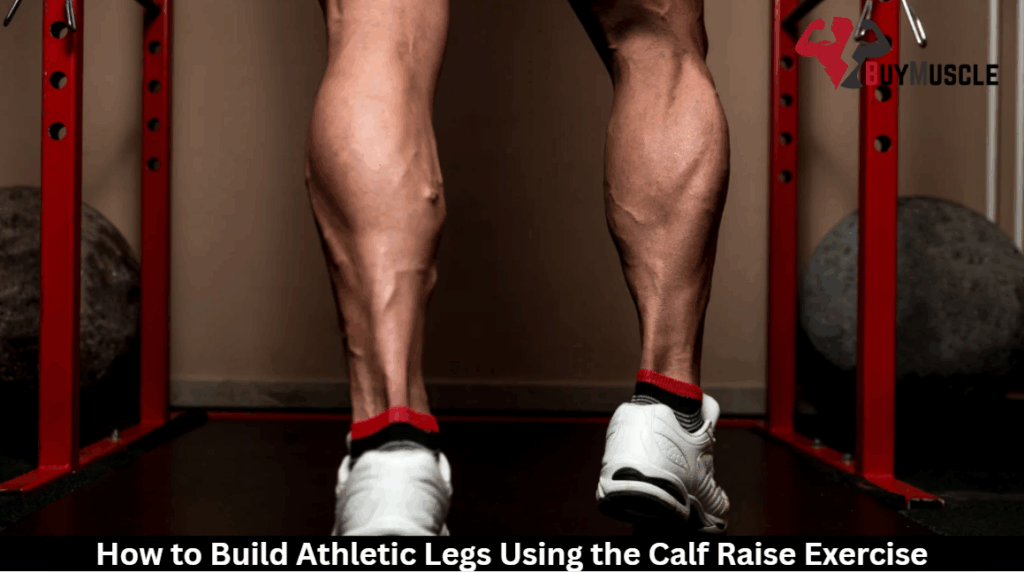You’ve probably noticed how sprinters and jumpers have those powerful, athletic legs. Most people focus on quads and hamstrings, but they often overlook their calves, which are the real game-changers. The appearance of your calves can turn decent legs into serious athletic engines.
Calf raises can help build that kind of power, but only if you’re doing them right. It’s not just about going up on your toes over and over. The real difference comes from using proper technique. That’s where the magic happens.
Why Calf Raises Matter for Athletic Legs
Many athletes work on developing big quads and hamstrings, but calf development gets left out of most leg training plans. This oversight can limit your athletic performance considerably, as strong calves are essential for explosive power in jumping, sprinting, and changing direction.
Proper calf muscle development involves targeting both the gastrocnemius (upper calf) and soleus (lower calf) muscles. The gastrocnemius activation you’ll achieve through calf raises directly translates to improved vertical leap and acceleration. Additionally, these exercises enhance ankle mobility and stability, reducing injury risk during high-intensity movements.
Don’t underestimate these smaller muscles. They’re responsible for transferring force from your body to the ground. By strengthening your calves, you’re building a foundation for athletic success in virtually any sport requiring lower-body power.
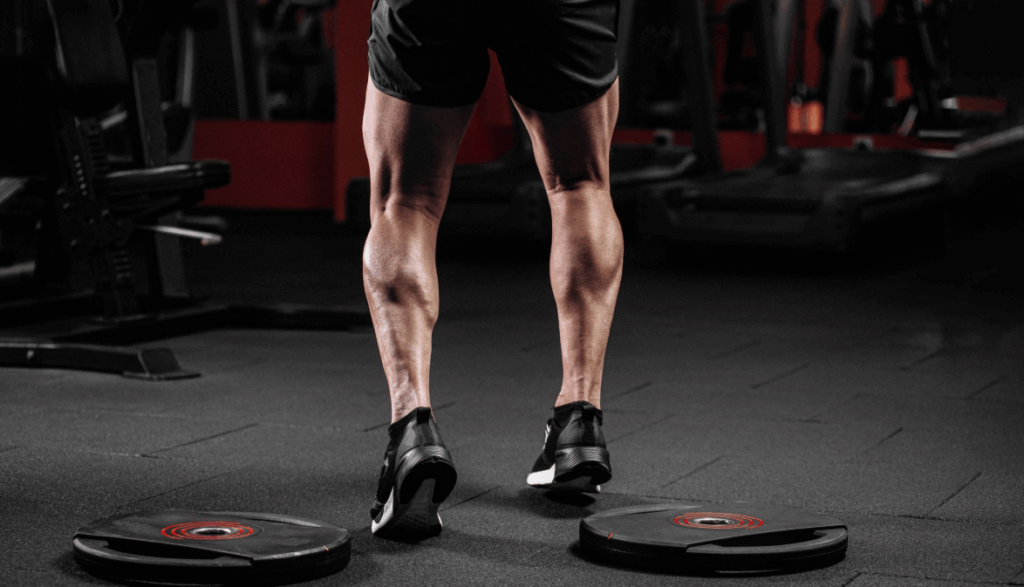
Mastering Proper Form for Maximum Results
Because poor technique can sabotage even the most dedicated calf training program, mastering proper form should be your top priority. Start your standing calf raises exercise with feet shoulder-width apart, ensuring weight is distributed evenly through the balls of your feet.
For peak leg muscle hypertrophy, press upward with controlled power until you’re fully on your toes, then lower with equal control. Don’t rush. Quality trumps quantity. Keep your core engaged and knees slightly soft, never locked.
To enhance balance and coordination, maintain a steady posture without swaying. For improved muscle endurance, focus on the complete range of motion rather than partial reps. Remember to press through all toes evenly, avoiding rolling to the outside or inside edges of your feet.
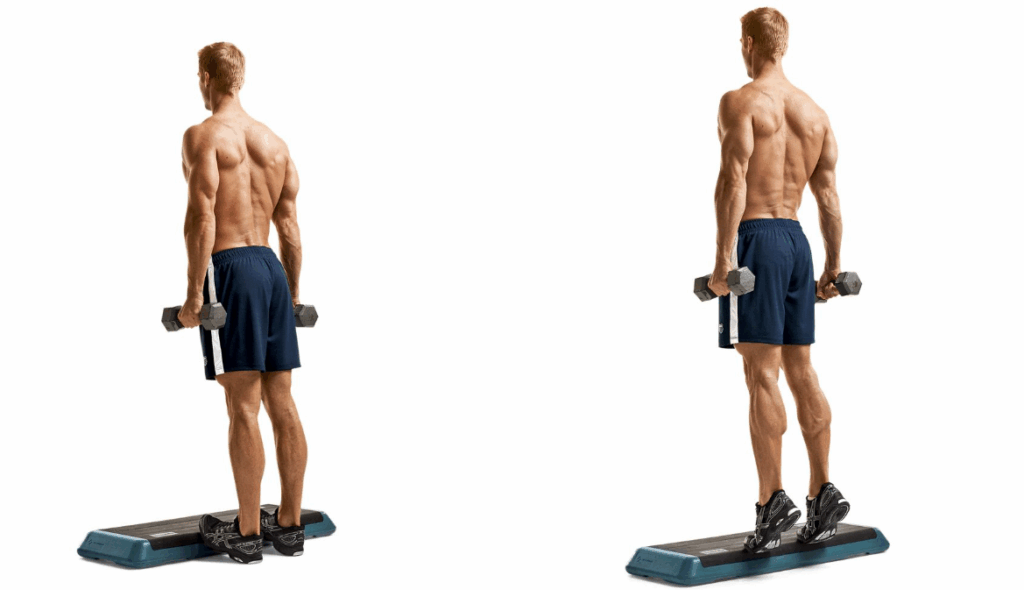
Key Variations to Train All Angles
You need to alternate calf raises to hit different angles and muscle groups for well-rounded, athletic legs. Standing calf raises are your go-to for targeting the gastrocnemius. Just keep your legs straight during the movement to really dial in the tension.
But don’t stop there. Add seated calf raises to your routine to hit the soleus. It plays a big role in endurance and stability, especially for explosive or repetitive movements. Since you bend your knees during seated raises, the gastroc takes a back seat, and the soleus does all the heavy lifting. It’s a must if you’re aiming for full lower leg development.
Don’t neglect single-leg variations, which correct imbalances and enhance stability. Alternating between these movements in your routine guarantees thorough development and prevents plateaus in your training progress.
Structuring Your Calf Workout for Hypertrophy and Power
Integrate these three distinct approaches when designing an effective calf training routine for both size and athletic power. Start with moderate to heavy resistance training, about 8 – 12 reps per set. This range also stimulates the deeper muscle fibers for strong, powerful legs.
Next, mix in some high-rep burnout sets, around 15 to 25 reps. These push your muscular endurance and create that burn through metabolic stress, which is great for growth and ties in well with sports conditioning.
Don’t forget that consistency matters. Train your calves two to three times a week, gradually increasing the weight over time. For the best results, spread those sessions out with at least 48 to 72 hours of rest between direct calf workouts. That way, you give your muscles the time they need to recover and grow.
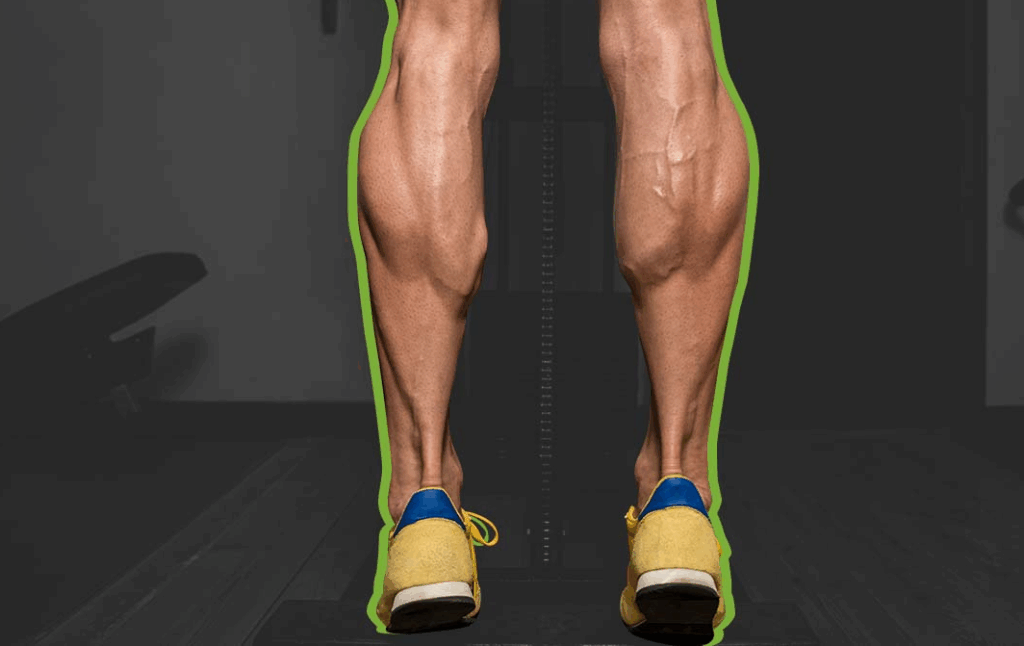
Enhancing Mind-Muscle Connection and Range of Motion
While many athletes focus exclusively on weight progression, developing a strong mind-muscle connection transforms ordinary calf raises into highly effective leg builders. You’ll maximize results by pausing for 1-2 seconds at the top of each repetition, squeezing your calves with intention rather than bouncing through reps.
Don’t rush the lowering phase. Controlling the descent allows your calves to work through their full range of motion. When you reach the bottom position, feel the stretch through your Achilles tendon and calf muscles before initiating the next rep.
Try performing some sets with your eyes closed to intensify your focus on the sensation of the muscle working. The heightened awareness eliminates compensation patterns and guarantees your calves, not your quads or glutes, handle the workload.
Common Mistakes That Stall Progress
Four critical errors prevent most athletes from developing truly impressive calf strength and definition. The most common mistake is bouncing through repetitions, relying on momentum rather than controlled muscle contraction. You’re cheating yourself out of gains when you rush the movement.
Another error is failing to increase resistance over time progressively. Your calves adapt quickly, so you’ll need to challenge them with heavier loads or more challenging variations consistently.
Many athletes also neglect proper ankle preparation, skipping essential mobility work that prevents injury and enhances range of motion. This limitation restricts your ability to activate the muscle fibers fully.
Finally, inconsistent training frequency stunts growth. Unlike larger muscle groups, calves often require more frequent stimulation to respond with noticeable hypertrophy.
Frequently Asked Questions
Do Genetics Influence Calf Muscle Development Potential?
Yes, your genetics influence calf development potential through muscle fiber distribution and insertion points. You’ll still make progress with consistent training, but your genetic blueprint partly determines your maximum achievable calf size.
How Can I Overcome Calf Training Plateaus?
To overcome calf training plateaus, you’ll need to introduce variety. Try different foot positions, increase weight progressively, add tempo variations, and guarantee adequate recovery. Don’t forget to implement drop sets for breaking stubborn growth barriers.
Are Barefoot Calf Raises More Effective Than With Shoes?
Barefoot calf raises can be more effective than wearing shoes since they increase range of motion and strengthen foot muscles. You’ll activate more stabilizers and improve proprioception, enhancing your mind-muscle connection during the exercise.
Do Running or Cycling Affect Calf Training Recovery?
Yes, running and cycling can delay calf recovery. Take extra rest days between calf workouts if you’re also doing these activities regularly. Consider alternating training days for ideal muscle regeneration.
Can Ankle Mobility Issues Limit Calf Raise Effectiveness?
Yes, poor ankle mobility can greatly limit your calf raise effectiveness. You’ll experience reduced range of motion, compromised muscle activation, and potential compensation patterns. Address mobility limitations first for ideal calf development and performance.
